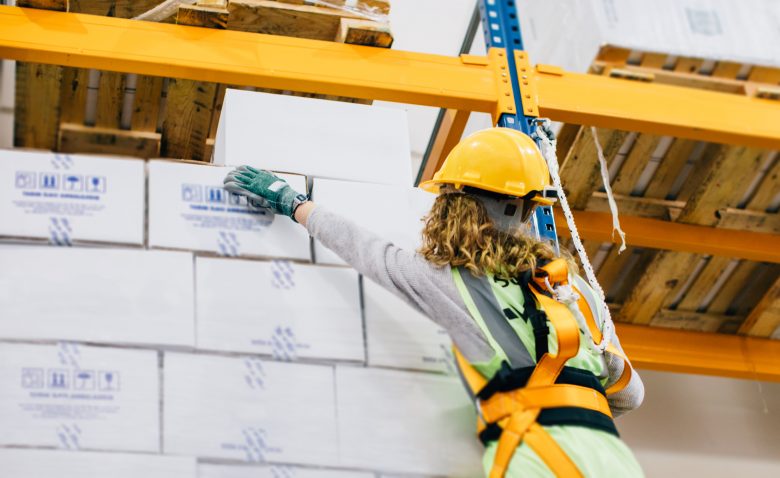Construction site safety is a concern for all those who supervise and manage the projects. Thousands of workers are injured or killed on job-sites each year, and many of those incidents are entirely avoidable. Understandably, supervisors and managers are required to maintain a safe and healthy workplace.
Managing construction safety risks requires recognizing the most frequently cited Occupational Safety and Health Administration (OSHA) standards and focusing on reducing the injury rates. Beyond serious OSHA citations, safety risk can be a monetary issue, given the financial implications of:
- the cost of injuries
- multi-employer contract liabilities
- civil exposure to another contractor’s injured employees or injured members of the public
- harm to reputation, brand and bidding ability after a highly publicized incident
Increasingly, even a single serious OSHA citation or a modest number of injuries may be enough to cost a contractor a bid worth millions of dollars.
“The fatal injury rate for the construction industry is higher than the national average in this category for all industries,” reports OSHA. This fact makes a construction site a shockingly high-risk work environment. To that end, here are some of the most common causes of construction site accidents and how to prevent them:
1. Falls from scaffolding
Approximately 65% of all construction workers perform work at dangerously high elevations. Employees working on scaffolds are potentially being exposed to a number of hazards such as falls, electrocutions and falling object hazards.
How do you manage the exposure to injury risk? To help prevent injuries while working on scaffolding, the structure should be designed, erected and disassembled by a competent person. Before the start of work each day the scaffolding should be inspected to ensure that it is safe for use.
Scaffolding should be erected on a level and solid footing, planked and decked as fully as possible, at least 10 feet away from power lines, and protected with guardrails, midrails, and toeboards.
2. Trips and falls
Because of the nature of the work, construction sites often have hazards like uneven terrain, unused materials on site, and buildings at various stages of completion that can lead to serious injuries when workers are distracted.
How do you manage the risk of trips and falls? The lack of fall protection is one of the leading causes of worker deaths in the construction industry. Employers, supervisors and managers are required to provide fall protection systems for employees using walking or working surfaces with unprotected edges or sides that are six feet above a lower level. Workers should also be protected from falling into holes such as elevator shafts and skylights as well as excavations. Fall protection should include guardrails, safety net systems, and personal fall arrest systems. Guardrails prevent falls from occurring while safety nets and personal fall arrest systems prevent workers from falling a great distance.
3. Electrocutions
On construction sites an effort is usually made to mark areas with exposed wiring, power lines, and incomplete electrical systems, but electrocution or shock can occur inadvertently. Workers can be injured either directly by touching live parts or indirectly via a conducting object or material.
What simple precaution should be taken to prevent electrical shock? The use of hard hats can protect workers from electrical shock, flying objects and other impacts. Supervisors and managers must provide all workers with head protection that meets consensus standards or is constructed in accordance with the consensus standards. Hard hats should be kept in good condition and be replaced immediately if they suffer an electric shock.
4. Falling objects and debris
It is not uncommon for workers to be injured by falling tools, building materials or beams on construction sites that deal with multilevel dwellings or buildings.
What actions reduce the risks posed by falling objects? Employers, supervisors and managers are responsible for protecting workers from falling objects with either safety net systems, guardrail systems or personal fall arrest systems. If using a safety monitoring system, the safety monitor must be a competent person able to identify fall hazards and warn workers when they may be unaware of a fall hazard or they are working unsafely.
If conventional fall protection methods are infeasible, the protection plan must be site specific and developed by a qualified person. Areas where typical methods cannot be used must be restricted as controlled access zones and only employees selected to work there should be allowed to enter.
5. Caught in/between hazards
Caught in/between accidents take place when a worker’s body part is trapped, squeezed, crushed or compressed between two or more objects. These kinds of accidents include being caught between equipment and fixed objects, body parts pulled into unguarded machinery, cave-ins or collapsing materials, and equipment rollovers.
How can managers and supervisors prevent these types of injuries in the workplace and ensure the safety of their workers? Make sure all guards are in place and properly secured after servicing equipment, and familiarizing workers with the location of pinch, sheer, wrap and crush points on equipment, as well as pull-in areas. Safety managers should also train workers to keep their focus on what they and the people around them are doing.
Responsible supervisors are aware of their duty of care to employees, visitors, and those that may be affected by their activities. Following these tips will help supervisors and safety professionals manage construction worksites effectively, putting into action efficient accident prevention measures and reducing injuries.
John M. O’Brien is the principal attorney at The O’Brien & Zehnder Law Firm in Sacramento, California where he focuses his time to handle personal injury, catastrophic, construction and wrongful death cases. He is personally involved in all the cases and represents plaintiffs in a variety of complex settlement and court cases, frequently involving victims and family members of construction site accidents, product liability and wrongful death actions.

